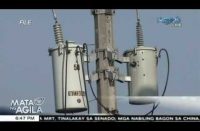Peru conducted a national drill on Monday (August 31) to prepare the South American country for predicted natural disasters from a strengthening El Niño weather phenomena that officials have predicted to be “extraordinary”.
El Niño is the periodic warming of sea-surface temperatures in the Pacific. This phenomenon is strengthening and is likely to peak in three to seven months’ time, the Australian Bureau of Meteorology said.
Coastal Peruvian cities like Tumbes and Piura were put through the paces to test their readiness should a natural disaster hit. Peruvian President Ollanta Humala oversaw the drill from the headquarters in the capital charged with monitoring the weather phenomena.
In Peru, El Niño has in previous years brought torrential rain that triggered floods and landslides, ruined roads and caused ocean warming that wreaked havoc on fishing.
“When El Niño comes we should be prepared. We have taken the actions that we need to. Sure the forces of nature are of a greater magnitude to what we can do, but this doesn’t mean that we can’t take precautions and the provisions which need to be taken. This government is taking provisions against natural (disasters),” said Humala.
The last major El Niño event, in 1997/1998, likely knocked 4.5 percentage points off Peru’s economic growth rate, officials reported. In 1982/1983, it is estimated to have kept GDP from expanding by 7 percentage points.
El Niño is expected to raise temperatures in the Pacific, setting off a chain reaction in the agriculture, fishing and tourism industries along the cost.
“At this time for Peru’s coast there is a 55 percent probability that it will happen rather than not happen. And if we just speak about El Niño in general being weak, strong or extraordinary this probability increases to 95 percent. This is to say that it is absolutely certain that at this time El Niño would develop in intensity by the summer of this year,” said Ken Takahashi, technical coordinator for Peru’s El Niño monitoring committee.
Peru is not the only country at risk with Ecuador, India, Indonesia and many other nations in danger of confronting drought, monsoon, storms and typhoons that are expected to be generated from El Niño.





